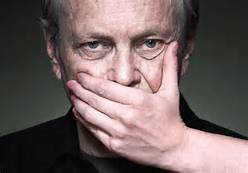 Ageism has the strongest cultural hold in the US when it comes to sexuality. Awareness of ageism is increasing, and this is facilitating improvement in some areas while only glacially creeping along in others. Change is constant, but it’s slow and uneven across facets of life. For example, an older woman who takes up body building might be celebrated for her commitment to her health; however, the same folks who cheered before might be visibly embarrassed to learn that her decision translated into an unapologetic and dynamic sex life she doesn’t mind discussing, even as she approaches the age of 80.
Ageism has the strongest cultural hold in the US when it comes to sexuality. Awareness of ageism is increasing, and this is facilitating improvement in some areas while only glacially creeping along in others. Change is constant, but it’s slow and uneven across facets of life. For example, an older woman who takes up body building might be celebrated for her commitment to her health; however, the same folks who cheered before might be visibly embarrassed to learn that her decision translated into an unapologetic and dynamic sex life she doesn’t mind discussing, even as she approaches the age of 80.
—
Today’s guest writer is a longtime, valued member of our staff. Gregory Peebles, MA, CSA, CDP. Gregory is an Associate Care Manager. We welcome Gregory’s contribution to the voice of Creative Care Management, LLC.
—
Older adults are expected to conform to stereotypes – gentle, domestic, and (most of all perhaps) de-sexed. The major problem with this is that people do not age according to societal expectations. The National Institute on Aging (NIA) indicates that a rewarding sex life is a high priority for aging adults across population; however, a poll from the University of Michigan demonstrates a reluctance (17%) of older adults to discuss sex even with their healthcare provider. This is due in part to limited time with the physician and otherwise to mutual generational discomfort between patients and physicians, often 30 to 40 years distant from each other in age.
As difficult as it may seem to discuss it with our older loved ones, breaking the silence about sexuality and aging combats ageism’s dismissal of older adults. The willingness to confront ageism has also illuminated the intersection of ageism with other harmful “-isms” like ableism (which prioritizes able bodies over disabled bodies) and homophobia (which prioritizes heterosexual expression). So, the fight against ageism is also a fight across the board for aging marginalized communities to improve quality of life.
Perhaps the most important to note is that health, not age, determines sexual capacity. Speaking generally, a sexually active older adult is a physically healthy older adult. Our perceptions of what aging adults should and should not do must prioritize first person testimonies of happiness and wellbeing – no matter what it “looks like” to traditionalists. Encouraging families, healthcare providers and the community at large to be more accepting of the older adult’s potential for intimate experiences opens the door for stronger communication and enhanced experience across all facets of life.
And ultimately this aspect of one’s expression of physical love is connected to the universal human need to be loved, which is an integral part of every person’s life experience.
Ageism is the subtle, popular prejudice that a person’s age determines their worth and what behaviors are appropriate. As longevity continues to increase, what was considered “old” before isn’t anymore, and consequently what is considered “old” now depends on whom you ask.
Unfortunately, many people only discover that they’ve crossed the threshold when a younger person laughs at, or dismisses, them.
In my work as a Certified Senior Advisor (CSA), I have noticed that my clients frequently are treated by healthcare providers and other professionals as if there is a clear age boundary. Once a person crosses it, it turns them into an “old person” who is expected to look and act accordingly. Trouble is, we all know there’s no such boundary. Today’s mature adult typically doesn’t “act their age”. Older adults are actively encouraged to be active, enjoy their “third act”.
Sources:
https://www.nia.nih.gov/health/sexuality-later-life;
https://www.todaysgeriatricmedicine.com/archive/SO19p12.shtml
https://ihpi.umich.edu/news/sex-after-65-poll-older-adults-finds-links-health-gender-differences-lack-communication-doctors







